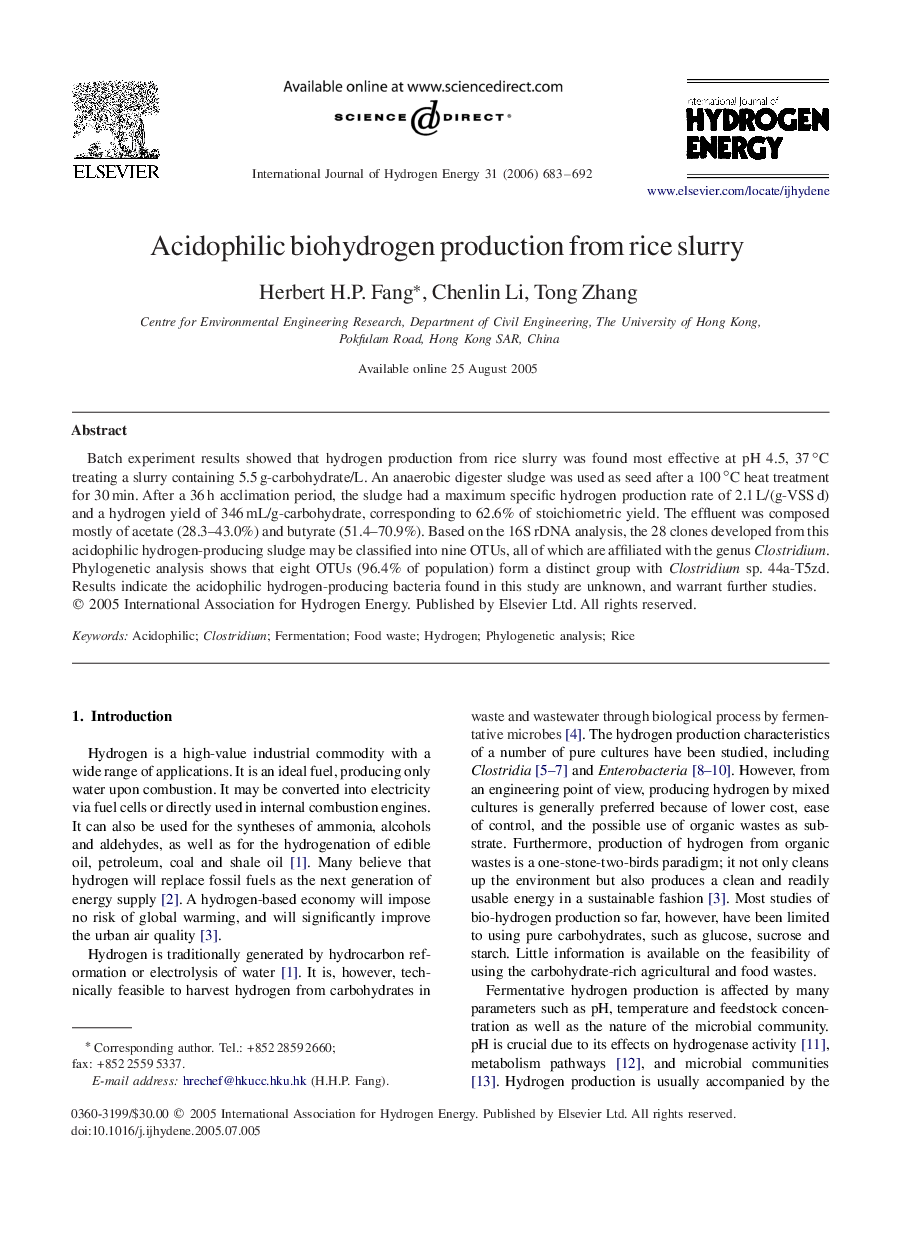| Article ID | Journal | Published Year | Pages | File Type |
|---|---|---|---|---|
| 1275547 | International Journal of Hydrogen Energy | 2006 | 10 Pages |
Batch experiment results showed that hydrogen production from rice slurry was found most effective at pH 4.5, 37 °C treating a slurry containing 5.5 g-carbohydrate/L. An anaerobic digester sludge was used as seed after a 100 °C heat treatment for 30 min. After a 36 h acclimation period, the sludge had a maximum specific hydrogen production rate of 2.1 L/(g-VSS d) and a hydrogen yield of 346 mL/g-carbohydrate, corresponding to 62.6% of stoichiometric yield. The effluent was composed mostly of acetate (28.3–43.0%) and butyrate (51.4–70.9%). Based on the 16S rDNA analysis, the 28 clones developed from this acidophilic hydrogen-producing sludge may be classified into nine OTUs, all of which are affiliated with the genus Clostridium. Phylogenetic analysis shows that eight OTUs (96.4% of population) form a distinct group with Clostridium sp. 44a-T5zd. Results indicate the acidophilic hydrogen-producing bacteria found in this study are unknown, and warrant further studies.
